
Teletimes – Please tell us about Thuraya and its products.
Samer Halawi – Thuraya Telecommunications Company offers innovative data, maritime, voice, fleet management and aero services to a consumer base of vertical markets consisting of defense, government, energy, broadcast media, NGOs and large corporates. Our satellite network covers two-thirds of the world’s geographical area across 140 countries. We have a long track record of introducing industry firsts. Thuraya recently launched the Thuraya XT-DUAL, the world’s only dual mode satellite and GSM phone. The XT-DUAL makes us the only satellite operator to offer seamless communications, as it provides our customers the flexibility and freedom to alternate between GSM and satellite modes for optimum coverage and connectivity. This device is an extension of the ever-successful Thuraya XT, also known as ‘the world’s toughest satellite phone.’
In addition to voice handsets, Thuraya provides the Thuraya IP, the world’s smallest satellite broadband solution. Delivering speeds of up to 444 Kbps, the A5-sized Thuraya IP is easily deployable and can be easily slipped into a rucksack, yet is rugged enough to withstand the most extreme conditions. It is the only satellite broadband solution with the ‘Asymmetric Streaming’ capability, whereby users can adjust upload and download speeds, paying only for the bandwidth they use. This results in highly significant cost savings. The IP’s popular “Plug and Play” system ensures instant connectivity without additional software. Complementing these features are Thuraya’s exclusive unlimited usage plans, which are extremely beneficial for customers looking to ensure budget predictability.
Thuraya also offers a series of L-band products tailored for the maritime market. Our latest offering is the SF2500 voice terminal with a GPS tracking feature. The SF2500 is specially designed for small and medium-sized fishing vessels, leisure and surveillance boats operating in harsh environments. The ‘Indonesian Fisherman Association’ is an early adopter of this voice terminal. Another maritime solution that caters to low-end mobile satellite users is the Seagull 5000i. It offers voice, SMS, fax and data services through the Thuraya satellite network. We also provide a range of flexible usage plans, which when coupled with the quality and reliability of the L-band network; provide an unbeatable proposition for maritime users.
Thuraya is the only mobile satellite operator in the world to offer GSM roaming services, allowing GSM SIMs to work outside normal terrestrial coverage areas. Our unique High Gain Spot Beams and Dynamic Resource Allocation (DRA) offer continuous, clear and uninterrupted coverage and are designed to respond to surges in traffic demand by allocating resources to areas of high traffic. Thuraya is a diverse and reliable service provider. We employ more than 200 highly qualified people of different nationalities throughout our global locations and continue to deliver a wide variety of cutting-edge solutions to our entire customer base.
TT – How many countries are presently covered under Thuraya Satellite communication network? What is your future expansion plan?
SH – Thuraya’s global reach extends to more than 140 countries across Europe, the Middle East, Africa, Asia Pacific and Australia. At present, our assets in space meet the requirements of our business plans. Our prime focus continues to be Asia, key vertical markets and data services. We are also committed to continued market leadership in mobile satellite handhelds and to simplifying satellite communications through delivering innovative products and solutions which empower humanity with the means to communicate clearly and efficiently.
TT – You recently have set up a regional office in Singapore. How do you foresee the region in terms of Satellite communication?
SH – Asia is a fantastic market for satellite communications, given its size, population and rising financial clout. Our growth promoters in this region are the maritime industry, the increasing demand for networks capable of delivering emergency communications in troubled times, plus coverage in remote areas outside terrestrial GSM networks.
We enhanced our IP services in Asia recently by establishing a ‘Point Of Presence’ (POP) and ‘Meet Me Point’ (MMP) in Singapore. The POP provides our IP customers faster and affordable streaming services from practically anywhere to newsrooms and data centers across Asia.
TT – What are the latest updates with respect to satellite communication technologies and devices?
SH – Today, the satellite industry is seeing a surge of opportunities in broadband IP services, defense and military applications and associated sectors. This growth is fuelled by TV broadcasting, satellite internet and military use. New satellites and technologies are being developed to ensure greater transmission power to support these applications.
Initially, C-band was predominantly used for satellite communications in the FSS world. Now, there is rapid growth in Ku-band usage because of availability of higher bandwidth at cheaper prices. The latest addition is Ka. However, industry experts have conflicting views on the capabilities and hence the viability and success of Ka-band services.
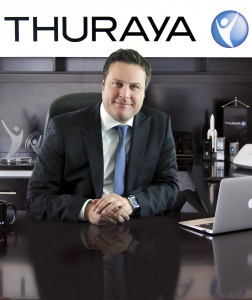 In the MSS world, the need for higher throughput with more mobile and reliable terminals is on the rise. This is driving the adoption of technologies, including the latest compression techniques, phased array antennas, better IP standards and new waveforms, which can enable these.
In the MSS world, the need for higher throughput with more mobile and reliable terminals is on the rise. This is driving the adoption of technologies, including the latest compression techniques, phased array antennas, better IP standards and new waveforms, which can enable these.
While satellites are incorporating better technologies to ensure greater transmit power, user devices are becoming more compact. Most of the new handsets from Thuraya and other MSS operators are getting smaller, smarter and more rugged. The Thuraya XT is the best and the most successful handset currently available in the market. Concomitantly, broadband devices for land and maritime markets are improving by the day on the bandwidth capabilities and becoming more IP-centric. Thuraya IP is the best example of a highly compact satellite IP terminal with the highest bandwidth available in the market.
TT – BBC recently published a story on hacker’s interference into US satellite network in between 2007 & 2008. Are satellites open to hacking attacks?
SH – Such occurrences are highly unlikely in the satellite industry, because of the high risk that the hacker might face in controlling the satellite in orbit. However, we believe some people might attempt to do just that, if enough security measures are not put in place to thwart them.
In Thuraya, we have applied stringent security measures across our network to prevent any attack. Our satellite control network is physically isolated from the external world to prevent access by external parties. Furthermore, we have put processes in place to monitor any attempt of an attack.
TT – Disaster management and relief activities in remote areas require critical communication services. How does Thuraya fit in such situations and please share some recent implementations by Thuraya.
SH – As previously noted, Thuraya’s satellites cover more than 140 countries in Europe, Africa, the Middle East, Asia and Australia. This also includes the world’s major disaster zones. Ours is a robust network that dynamically allocates resources. In other words, if there is a disruption in terrestrial GSM networks Thuraya serves as the most viable and appropriate communications network. Moreover, we offer compact and rapidly deployable solutions. Consequently, relief and disaster management agencies can instantly set up satellite communication hubs in the aftermath of natural disasters.
Again, in remote areas outside terrestrial coverage, customers may need to communicate with multiple organizations to facilitate operations. To assist them, Thuraya offers an extremely reliable, cost effective solution based on Thuraya IP. It works by integrating different communications technologies into a single, closed user group. This service merges Thuraya IP, Thuraya satellite phones, public switch telephone networks, GSM and radio systems to provide NGOs with a comprehensive communications platform for emergency communications. With this solution, consumers can communicate with various technologies reliably for smooth operations.
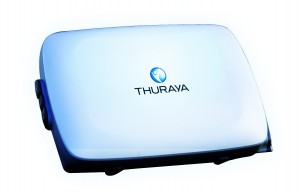 Thuraya’s satellite phones have GPRS, voice and GPS capabilities that relay the exact location and extent of disasters, coordinating medical attention and relief efforts. We also provide extremely affordable solutions that make use of GPS to pinpoint user location and notify the nearest emergency outpost and pre-configured contacts. Our data solutions give relief and surveillance parties quick access to high-speed mobile satellite broadband to browse for weather and mapping services, which are critical in rescue and relief efforts. Thuraya collaborated with the International Telecommunications Union (ITU) to deploy emergency communications in Japan, following the earthquake and tsunami last year. We have provided our solutions for the setup of disaster surveillance centers in Uganda, Philippines and Turkey. We have also contributed to save lives in Samoa, Malawi, Pakistan, and Indonesia when these countries were hit by terrible natural disasters.
Thuraya’s satellite phones have GPRS, voice and GPS capabilities that relay the exact location and extent of disasters, coordinating medical attention and relief efforts. We also provide extremely affordable solutions that make use of GPS to pinpoint user location and notify the nearest emergency outpost and pre-configured contacts. Our data solutions give relief and surveillance parties quick access to high-speed mobile satellite broadband to browse for weather and mapping services, which are critical in rescue and relief efforts. Thuraya collaborated with the International Telecommunications Union (ITU) to deploy emergency communications in Japan, following the earthquake and tsunami last year. We have provided our solutions for the setup of disaster surveillance centers in Uganda, Philippines and Turkey. We have also contributed to save lives in Samoa, Malawi, Pakistan, and Indonesia when these countries were hit by terrible natural disasters.
TT – What is the global growth rate for mobile satellite communications and how do you foresee the future of it with respect to data services?
SH – Overall, there is strong growth across all market segments and the Mobile Satellite Services (MSS) environment remains very competitive. The MSS wholesale revenues are poised to grow roughly between 7-8{e1f18614b95d3cd6e4b3128e1cd15d99b042a60a5a19c19b7a8e07e7495efa10} over the coming years, due to increased demand for broadband as well as other MSS services in key regions and verticals. Trends are more favorable within maritime, energy, media sectors and Non-Governmental Organizations (NGOs). They also remain positive in the Middle East and Asia.
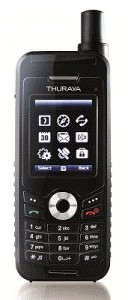 One of the major drivers of the MSS industry is data, with a major shift from a legacy of voice services towards more data traffic-high-speed broadband applications, low-speed asset tracking and messaging. This highlights the general shift in the nature of MSS traffic as well as the importance of data transmissions and services in shaping growth in the MSS sector. Plus, considering the advancements in technology and newer generations of terminals and satellites, we envision higher data transmission rates, increased capabilities, and enhanced interfaces to address the increasing demand and communication requirements of professional end-users.
One of the major drivers of the MSS industry is data, with a major shift from a legacy of voice services towards more data traffic-high-speed broadband applications, low-speed asset tracking and messaging. This highlights the general shift in the nature of MSS traffic as well as the importance of data transmissions and services in shaping growth in the MSS sector. Plus, considering the advancements in technology and newer generations of terminals and satellites, we envision higher data transmission rates, increased capabilities, and enhanced interfaces to address the increasing demand and communication requirements of professional end-users.
TT – What are your thoughts about IP-based communication over satellites?
SH – ‘Data’ is not just another buzz word; it has transformed into a global business phenomenon that is escalating into multi-billion dollar revenues for the communications industry. The most reliable and convenient choice for high-speed data services in remote areas is satellite communications. Satellites provide broadband service practically anywhere and create remote office capabilities similar to setups with the latest communication tools. IP-based communication over satellites is the major driver for the mobile satellite services industry in the coming years. As the whole world moves towards data, so does the satellite industry.
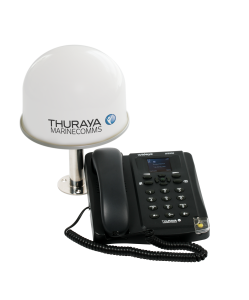 Several market sectors such as energy, NGO, government, defense, broadcast media and maritime depend heavily on IP-based communications over satellites for operational efficiency. Customers are sending and receiving more information across in real time for business purposes, pushing the need for IP-based satellite communications upward. Users in remote areas, needing remote office setups with facilities such as high-speed data service, email, browsing, video-conferencing and streaming can achieve this only through satellite broadband solutions. It is an industry that will continue to grow. Customers will demand more compact solutions with higher bandwidth throughput for higher quality of service. Thuraya is already taking the lead with Thuraya IP and associated solutions.
Several market sectors such as energy, NGO, government, defense, broadcast media and maritime depend heavily on IP-based communications over satellites for operational efficiency. Customers are sending and receiving more information across in real time for business purposes, pushing the need for IP-based satellite communications upward. Users in remote areas, needing remote office setups with facilities such as high-speed data service, email, browsing, video-conferencing and streaming can achieve this only through satellite broadband solutions. It is an industry that will continue to grow. Customers will demand more compact solutions with higher bandwidth throughput for higher quality of service. Thuraya is already taking the lead with Thuraya IP and associated solutions.
TT – How does “convergence of services” relate to satellite communications?
SH – As with terrestrial telecom operators who use technologies such as GSM and LTE, satellite operators are also looking into possible ways to combine service offerings on different operator’s networks, in order to assemble attractive bundles for customers. For example, many oil and gas customers need a combination of some mobile satellite services and some VSAT services. This is also true for maritime customers. By combining the offerings of different operators, customers get the bandwidth they need at attractive prices while still enjoying full mobility when needed.
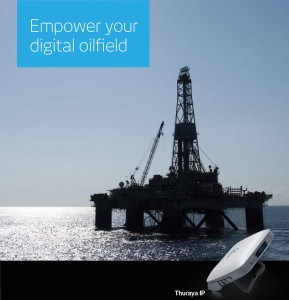 Another area where Thuraya is active is convergence of satellite and terrestrial. Thuraya is the only MSS operator offering a dual-mode satellite and GSM handset, the Thuraya XT-Dual. Customers can be assured of total access with this handset in the most remote as well as the most urban areas. Thuraya maintains roaming agreements with over 350 GSM operators spanning the globe. In July this year, we launched our roaming services in USA in partnership with the American mobile operator, T-Mobile.
Another area where Thuraya is active is convergence of satellite and terrestrial. Thuraya is the only MSS operator offering a dual-mode satellite and GSM handset, the Thuraya XT-Dual. Customers can be assured of total access with this handset in the most remote as well as the most urban areas. Thuraya maintains roaming agreements with over 350 GSM operators spanning the globe. In July this year, we launched our roaming services in USA in partnership with the American mobile operator, T-Mobile.
Thuraya is also looking actively into ways to expand its capacity and presence through resale or other arrangements with other satellite and terrestrial operators. Our goal is to offer reliable, affordable communication services by fully utilizing all the best networks available, regardless of technology. We believe that this is what customers want.
By working in collaboration with other satellite operators, or by converging satellite with terrestrial, Thuraya is embracing the interworking technologies’ trend which is currently driving modern telecoms networks.
TT – Your thoughts about Teletimes International magazine.
SH – Teletimes International provides timely and insightful analyses of ICT and telecommunication developments across the world, particularly in the Middle East, Africa and Asia, which are important markets to Thuraya in terms of growth and potential.
The magazine’s meticulously researched articles and features on vertical markets and the corporate sector help us develop a better understanding of end-customer requirements and expectations.
May 23, 2025











